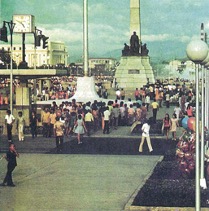
Architecture and Nation Building in Asia
Lectures (1)
Loading Accordion Items...The Overview
This lecture explores the ways in which architecture and built environments are used as a medium for social and political agenda, particularly in the Asian context. Since the 19th century, modern Asian nation state formation has encompassed a variety of processes, viz. the consolidation of monarchical centers, the dissolution of European colonial powers, democratization, modernization, and the engagement with international diplomacies. Architectural projects have been an important site through which national and collective identities have been formed and social and political relationships produced, enforced, and reinforced. Though Asia has been home to ancient civilizations and has vast and complex architectural histories, the period of nation building promises a specific historical phase, which witnessed an active search of new architectural expressions for the specific purpose of outward transnational projection as well as an emerging as a medium for unifying the imaginary of the newly independent countries. The architectural sites were broadly similar as well. One the one hand were formal political projects such as parliament buildings and memorials, while on the other were cultural institutions such as theatres, libraries and places of recreation such as sports complexes and carnivals. The function, design, and production of these architectural works were underpinned by important messages of societal and technological advancement, and over time, became symptomatic of the political power of the state.


